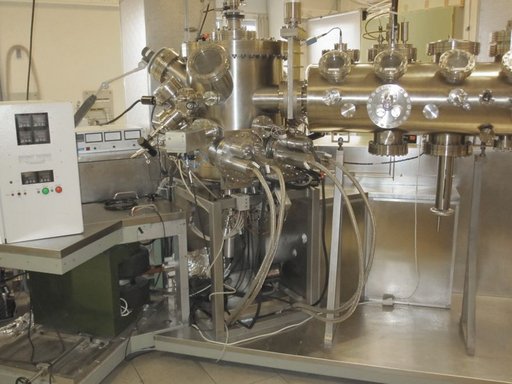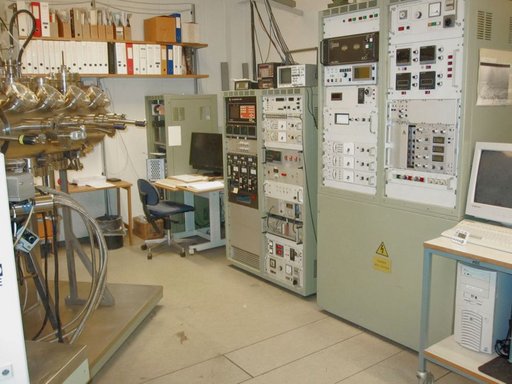

The Molecular Beam Epitaxy (MBE) facility at the Department of Physics and Astronomy (IFA) is a VG80 system for 100 mm wafers. When purchased in 1991 the system had two e-gun evaporators (8kW), two effusion cells and an ion doping system: Effusion cells for doping with Boron (B) and Antimony (Sb) and the ion doping system for doping with phosphorus (P) and arsenic (As) (ion-energy 200, 500 or 1000 eV). Connecting the ion doping system to the MBE occupied a port so that only one of the effusion cells could be used.
In the nineties most of the growth on Si substrates at the MBE was for dopant diffusion studies and defect studies in Si and SiGe and for growth technique studies. Much work has been done to reduce the number of dislocations created as a result of the lattice mismatch between Si, Ge and Tin (Sn) (lattice mismatch between Si and Ge is 4%, lattice mismatch between Si and Sn is 19%).
Today about half of the growth at the MBE is for growth of Si layers for solar cell research. Both crystalline, amorphous and polycrystalline layers are grown. We have ongoing projects such as a specially prepared wafer surface for tissue growth, grown Si crystal for undulation of high energy particles and grown thin enriched Si layers for measurement of the thermoelectric effect.
Since 1991 a number of changes have been made to the MBE system. The number of dopants and evaporants has changed from 4 to 10 (the ion doping system is no longer used). The number of dopant cells and main evaporators has been increased by replacing the old and big effusion cells with cells of a smaller diameter. One of the big effusion cells was replaced with a midi e-gun evaporation system containing two e-gun’s and the other big effusion cell was replaced with two effusion cells and a mini e-gun evaporator containing four pockets for various evaporation materials. Recently a hydrogen cracker was added to the MBE toolbox. The main purpose of the hydrogen cracker is to remove carbon (C) from the wafer surface.
Evaporation materials inside the chamber since last opening (13 Jun. 2012):
Si, Ge, 28Si, 30Si, B, Sb, Bi, Sn and C.